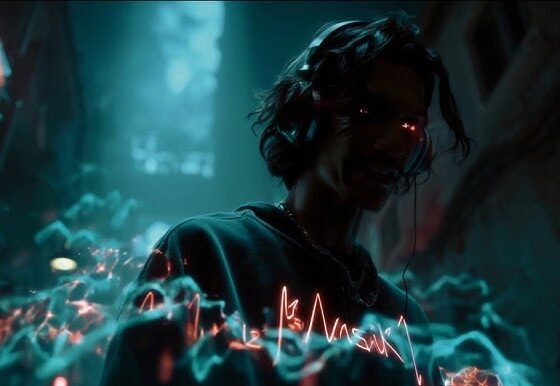Extra Time is an innovative musical project founded by Brendan McNamara, an artist recognized for his heartfelt lyrics and emotive melodies. Launched as a creative outlet, Extra Time aims to explore complex social issues through compelling music. McNamara has crafted a distinctive sound that melds genres while addressing poignant themes that resonate with listeners on various levels. The project’s latest release, ‘The Boy Who Dreamed of the Stars,’ serves as a testament to McNamara’s commitment to tackling sensitive subjects and offering a voice to those who may feel unheard.
This recently unveiled single, which was released on September 13, 2024, marks the third installment from McNamara’s album ‘Songs with Long Titles.’ This specific track is particularly noteworthy as it delves into the harrowing topic of child abuse, a theme that McNamara has a personal connection to, adding layers of authenticity and emotion to the composition. The choice to address such a serious issue reflects the artist’s desire to raise awareness and foster conversations around this sensitive subject matter, encouraging listeners to reflect on their own experiences and the impact of societal issues.
The connection between the music and its theme allows for an engaging listening experience, drawing the audience into a narrative that is both heart-wrenching and enlightening. As we move forward in our discussion, we will also examine the accompanying music video for ‘The Boy Who Dreamed of the Stars,’ which complements the song’s message through its artistic direction. The visuals not only enhance the musical experience but also reinforce the song’s crucial themes, making it a significant part of Extra Time’s ongoing contribution to contemporary music.
‘The Boy Who Dreamed of the Stars’ by Brendan McNamara stands out as a profound musical exploration of difficult themes, particularly the issue of child abuse. Through his poignant lyrics and emotive melodies, McNamara draws from his own childhood experiences to present a narrative that resonates with many. The song does not aim to elicit sympathy; rather, it seeks to highlight the harsh realities faced by victims, illustrating how art can be a powerful medium for addressing trauma.
A prominent aspect of the song is the use of a telescope as a metaphor. In this metaphor, the telescope symbolizes the deceptive offers and attention that predators may use to lure unsuspecting children. This clever imagery underlines the innocence of youth and the vulnerability of children who may be easily misled by seemingly harmless invitations. McNamara’s choice of words and imagery serves as a stark reminder of the predatory nature of such individuals while accentuating a child’s dream of exploring the stars, which can be manipulated for sinister purposes.
Furthermore, McNamara approaches the topic with sensitivity, facilitating an open dialogue about the experiences of survivors. By choosing to include these heavy themes in his work, the artist is not merely recounting his personal struggles but rather inviting listeners to confront the broader implications of child abuse within society. This courageous act of reflection allows for a communal understanding and empathy while demonstrating the potential of music as a transformational force.
In conclusion, ‘The Boy Who Dreamed of the Stars’ encapsulates deep and unsettling themes within its narrative, shedding light on the complexities of childhood trauma and the necessity for dialogue surrounding such critical issues. McNamara’s artistic choices provide a meaningful contribution toward understanding and healing.
The music video for ‘The Boy Who Dreamed of the Stars,’ directed by the acclaimed Nikita Kibirev and illustrated by Janelle Barone, serves as a vibrant visual narrative that complements the song’s poignant themes. The driving concept behind the video revolves around the profound dreams and aspirations of youth, encapsulated in a rich tapestry of animation that invokes emotional resonance. The artists meticulously crafted a storyline that intertwines various experiences of the protagonist as he journeys through different realms, symbolizing both struggles and triumphs.
The artistic choices in the video are particularly noteworthy, utilizing a dynamic color palette and fluid animation techniques that evoke both whimsy and introspection. Each frame has been designed to visually translate the sensitive themes found in the song, offering a depth that enriches the overall storytelling experience. The seamless integration of sound and visuals serves to enhance the emotional impact, inviting viewers to immerse themselves in the protagonist’s world. This alignment between the song’s lyrical narrative and the visual representation makes the music video a compelling exploration of its core message.
‘The Boy Who Dreamed of the Stars’ stands as a monumental release within the landscape of contemporary music and animation. This work not only showcases the artistic versatility of Extra Time but also delivers a powerful narrative centered around healing from trauma. The song’s poignant lyrics and the vibrant animation of the music video serve as vehicles for expression, enabling listeners and viewers to connect with the themes on a personal level. The blend of sound and visuals offers a unique experience, fostering an emotional resonance that is both profound and lasting.
The reception of ‘The Boy Who Dreamed of the Stars’ has been notably positive, reflecting a growing appreciation for artistry that addresses complex emotional landscapes. Audiences have praised Extra Time’s ability to craft an engaging narrative that encourages reflection and self-exploration. This artistic bravery provides an essential outlet for discussing difficult experiences, which often remain unaddressed in mainstream dialogues. Through this work, Extra Time illuminates the significance of creativity as a means of both coping and healing, highlighting how artistic expressions can contribute to the broader discourse on mental health and resilience.
Furthermore, the impactful nature of this release suggests that the themes explored in ‘The Boy Who Dreamed of the Stars’ are far-reaching. The artistic blend not only provides solace and understanding but also inspires a generation to engage in their own narratives and share their journeys of overcoming adversity. As Extra Time continues to develop their craft, the anticipation of future projects remains high. This release sets a compelling precedent, demonstrating that music and animation can serve as powerful tools for storytelling and healing, encouraging an ongoing dialogue that transcends personal experiences to touch on universal truths. In summary, the significance of this work lies not only in its immediate impact but also in its potential to inspire and uplift audiences for years to come.







